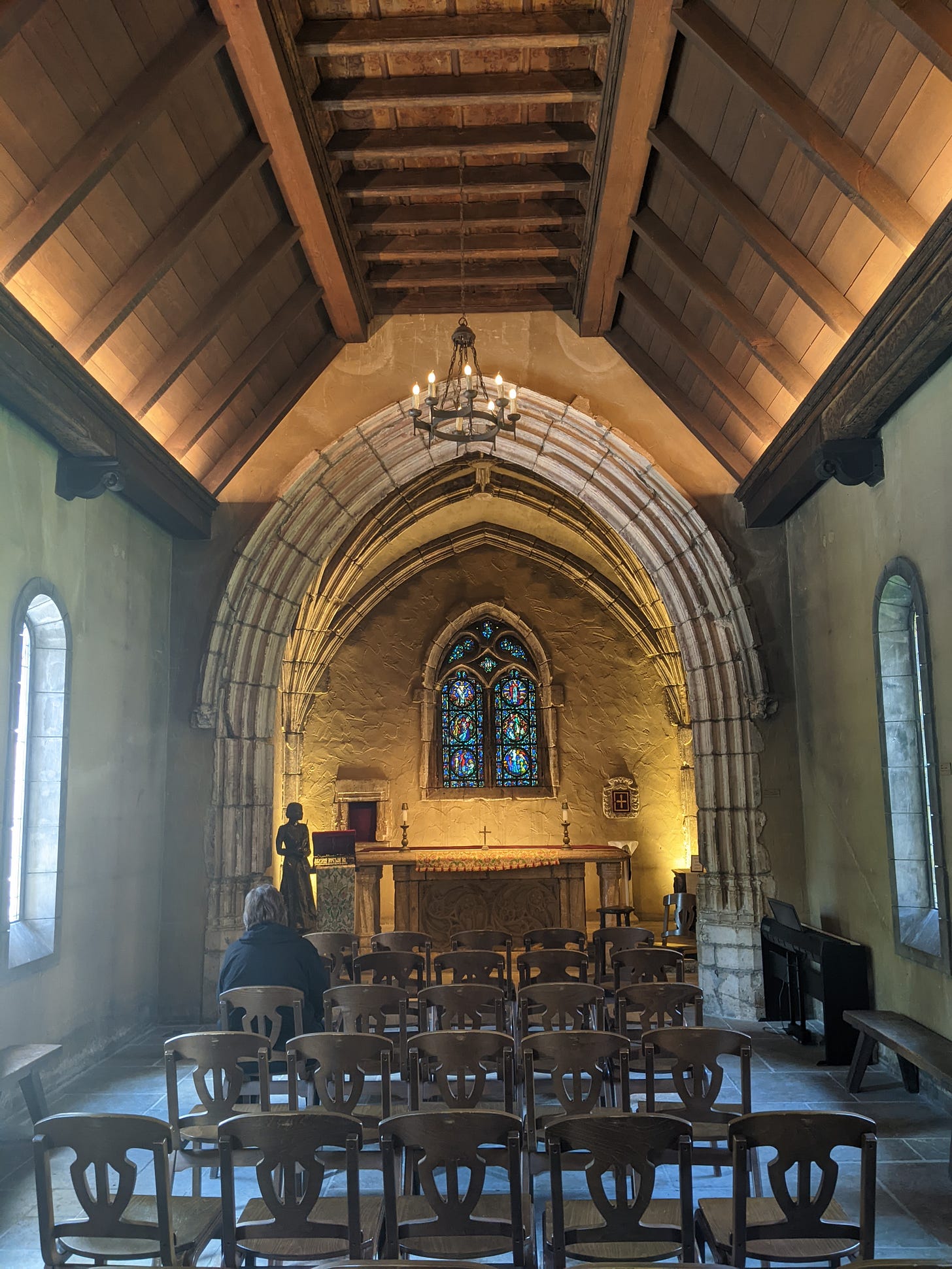One of my favorite trips over the summer was to a rather obscure chapel on the campus of Marquette University in Wisconsin. I had been told there was a chapel there that St. Joan of Arc had visited. My curiosity was piqued given that Joan lived in France and the chapel was in the US.
A brief note on its architecture. It is clearly Gothic in style. Its stained glass and pointed arches make this clear, even though it is a rather small chapel.
The chapel itself originated in the village of Chasse in the Rhone Valley, France, around the year 1420. As the years went on, the chapel fell into disrepair. In the 1920s, an architect by the name of Jacques Couelle photographed and measured the chapel. The chapel was then bought by Gertrude Hill Gavin and dismantled in France and shipped to Lon Island where it was reassembled. In 1962, Gavin sold the chapel to Marc Rojtman who in turn offered it to Fr. Edward O’Donnell, S.J., president of Marquette University. Fr. O’Donnell accepted and the chapel was soon moved to Milwaukee where its doors were opened in 1966.
St. Joan’s Connection
Many are familiar with St. Joan of Arc. Many stories have been written about her by great story tellers like Andrew Lang, Hilaire Belloc, Mark Twain, and Louis de Whol. She was even the subject of a recent comic book from Voyage Comics. She is by far one of the most popular saints in the history of the Church.
Her connection to the chapel does not seem to be a definite reality. That being said, there is some viable evidence that she did have a connection to the chapel. Gavin had a great devotion to St. Joan and she decided to rename the chapel in her honor even though it had been dedicated to St. Martin de Seysseul.
According to photographs of the chapel when it was in France, St. Joan came to pray in the chapel after meeting with King Charles VII on March 9, 1429 - during the siege of Orleans which took place between 1428-29.
To the left of the altar is a stone in the wall called the “Joan Stone.” It is believed that on this stone, Joan prayed for the intercession of the Blessed Virgin Mary for success in battle. She then knelt down and kissed the stone. Legend has it that the Joan stone remains colder than the stones around it. I placed my hand on the stone to see if the legend was true. Admittingly, it did feel colder (but not by much) than the stones around it.
Regardless of whether the legend and stories are true, there remains a beautiful chapel dedicated to St. Joan of Arc in the midst of the hustle and bustle of Marquette University. May she intercede for the professors and students there and may she do the same for us.
Saint Joan de Arc, ora pro nobis!





